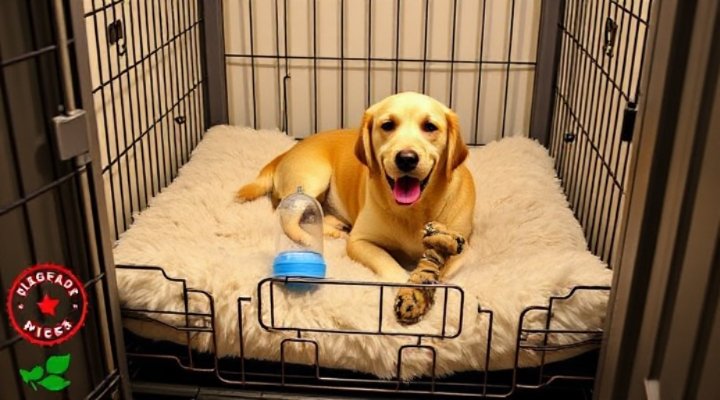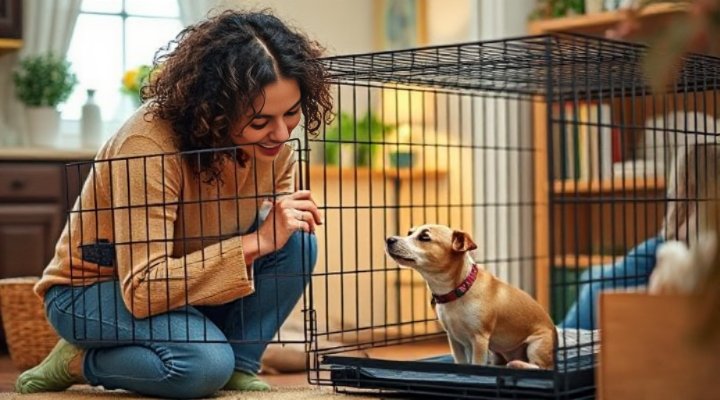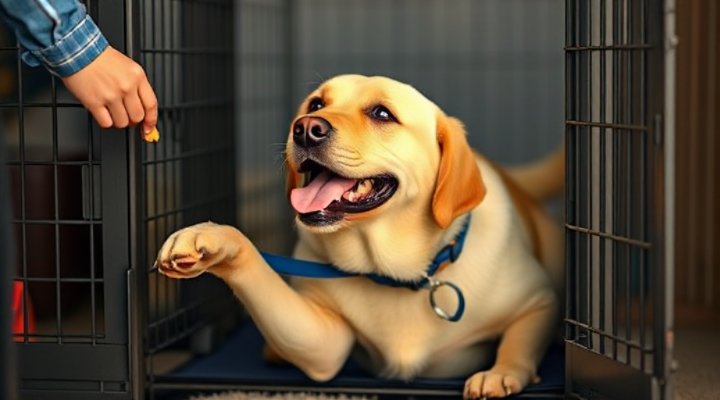If you’ve ever heard your dog whining in crate, you know how heartbreaking that sound can be. That pitiful whimper can make even the most disciplined pet parent question their crate training methods. But before you abandon crate training altogether, let’s explore why dogs whine in their crates and how you can help them feel more comfortable.

Why Do Dogs Whine in Their Crates?
Understanding the root cause of your dog’s distress is the first step to solving the problem. Dogs may whine in their crates for several reasons:
- Separation anxiety: Some dogs panic when separated from their owners
- Need to eliminate: Puppies especially may need more frequent bathroom breaks
- Discomfort: The crate may be too small, too hot, or lack proper bedding
- Boredom: Intelligent breeds need mental stimulation
- Fear: Negative associations with the crate can develop
According to the American Veterinary Medical Association, crate training done properly can benefit dogs, but it must be approached correctly.

Creating Positive Crate Associations
The key to stopping dog whining in crate is to make the space feel safe and rewarding. Here’s how:
- Start with short periods and gradually increase time
- Use high-value treats only given in the crate
- Feed meals in the crate with the door open
- Include favorite toys and comfort items
- Never use the crate for punishment
Our article on cage training dogs offers more detailed steps for creating positive associations.

Addressing Separation Anxiety
For dogs with severe anxiety, the whining may continue despite your best efforts. In these cases:
- Practice short departures and returns
- Leave an item with your scent in the crate
- Consider calming supplements (consult your vet first)
- Try background noise like soft music
- Exercise your dog thoroughly before crating
The rescue dog training guide has additional tips that may help anxious dogs adjust.

When to Seek Professional Help
While most cases of dog whining in crate can be resolved with patience and proper training, some situations warrant professional assistance:
- Destructive behavior when crated
- Excessive drooling or panting
- Self-injury attempts
- No improvement after consistent training
For persistent issues, consider consulting a certified trainer or veterinary behaviorist. The ASPCA offers excellent resources on finding qualified professionals.
Final Thoughts on Crate Training Success
Remember that every dog is different. What works for one may not work for another. The most important things are consistency, patience, and understanding your dog’s individual needs. With time and positive reinforcement, most dogs learn to see their crate as a safe haven rather than a place of distress.
For more training tips, check out our guides on teaching puppies to walk on leash and housebreaking adult dogs.
Related Keywords: stop dog whining in crate, how to calm a dog in crate, puppy crying in crate at night, dog crate training schedule, best crate for anxious dogs

